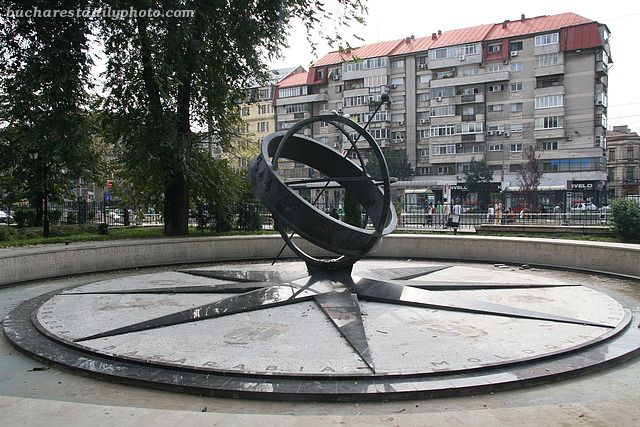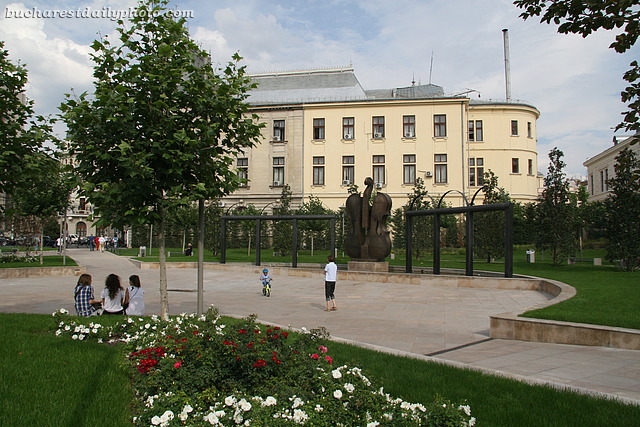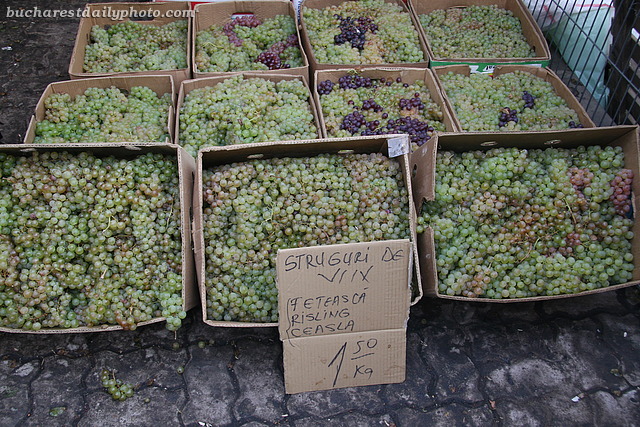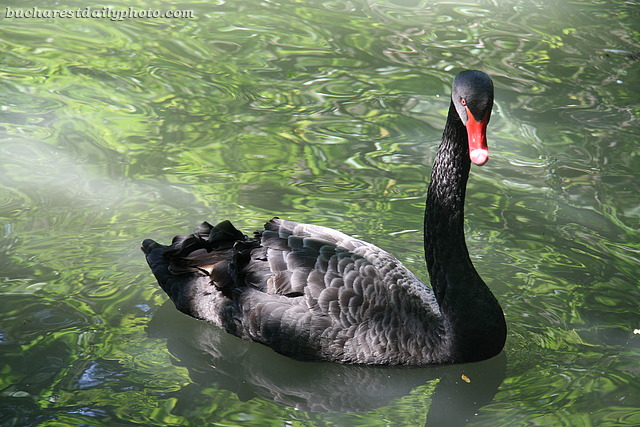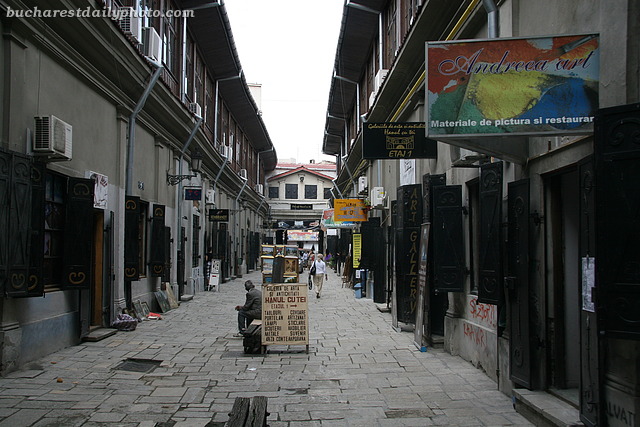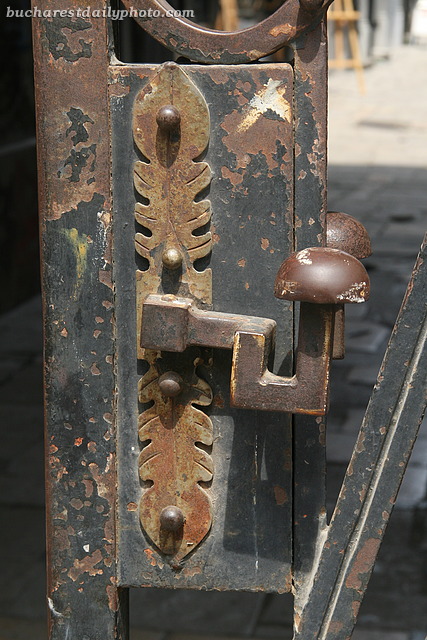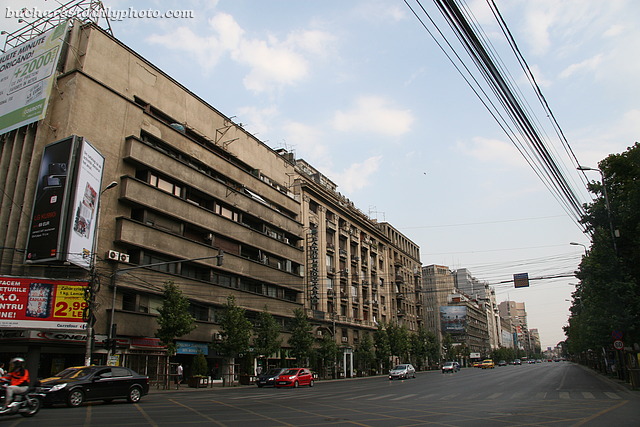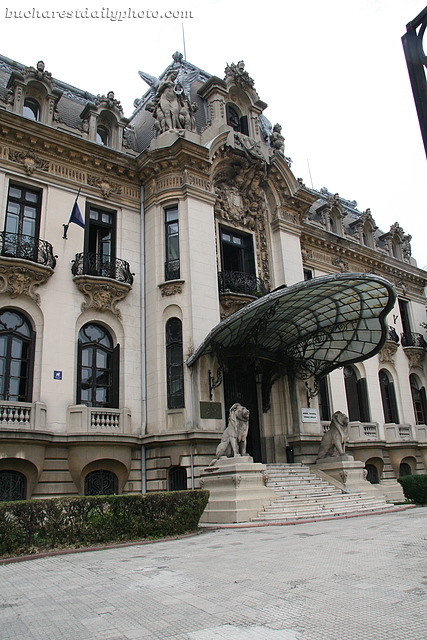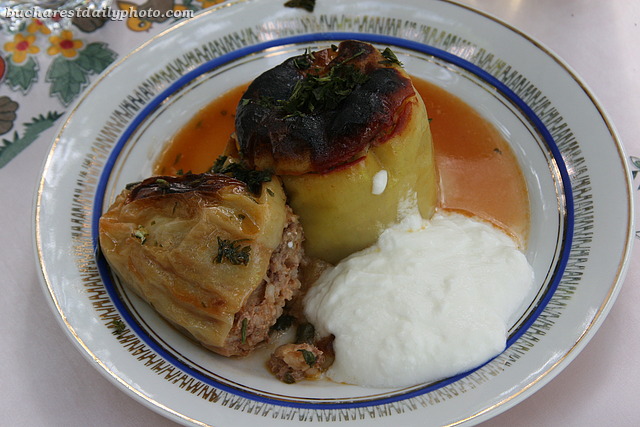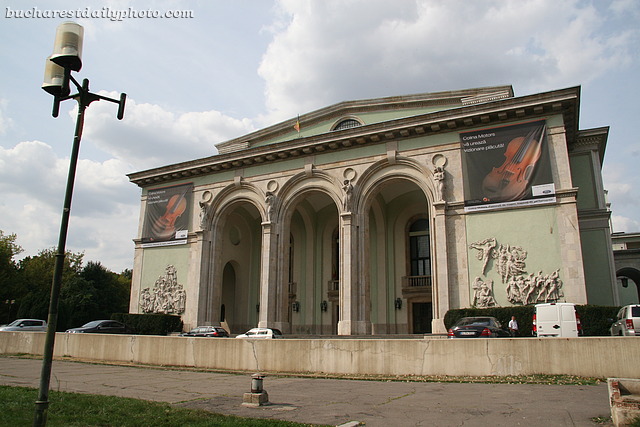One thing I like about keeping this blog – aside from the good excuse to walk the city and take photos – is the documentation work that I do before I write about a subject. I get to find out many interesting things about the history of Bucharest, events I didn’t imagine happened. I started to read about the history of Bucharest a few years ago but every day I keep discovering new things; I guess that’s normal for a city of this size and with 550 years of history behind it. To give you an example, who would think that such a benign looking monument as is the one in today’s photo has an interesting story?
The monument in the photo marks Romania’s Kilometer Zero. For those not familiar with the concept, in many countries Kilometer Zero or Zero Milestone is a location (usually in the country’s capital) from which all road distances are measured. It is also customary that this spot is signaled by a marker or a monument. The Kilometer Zero of Romania is located in downtown Bucharest in front of New Saint George Church. And the story behind it is as follows. In the beginning of 1937 the city hall decided to erect a monument on this spot, marking Kilometer Zero. The “Military Stone” was supposed to be ready until May 9th 1937. In reality the monument was not finished by that date and its inauguration took place more than half a century later, in 1998. The monument was supposed to include a circular stone basin with a wind rose and in between the spokes of the rose were supposed to be mosaics with the names and the coats of arms of the Romanian provinces. In the center of the monument the artist imagined a sphere and on top of the sphere the statue of Saint George killing the dragon. After initially agreeing with the project the Romanian Church changed its mind and opposed the statue invoking the second commandment, which for the Orthodox church is “You shall not make for yourself an idol”. The sculptor, Constantin Baraschi, changed the project and instead of the statue of Saint George he proposed that the sphere carries the statue of – are you ready for this? 🙂 – Prince Charming killing the dragon. Still the project is rejected and before further changes were made the war started. After the end of the war the provinces of Bessarabia and Bukovina remained under Russian control and their coats of arms and names could not be admitted on the monument so the sphere was taken away and after 1950 the monument was covered with earth. The project was reinitiated only after 1990 when the basin and the wind rose were dug up. In the center of the monument there’s only a metallic zodiac sphere; nobody’s killing the dragon on top of it or anywhere close by. The monument was inaugurated on June 9th 1998, 61 years after its deadline. The historical provinces of Bessarabia and Bukovina do appear on the monument even though they are not part of Romania anymore. Also, among the cities inscribed on the stone basin are also Chişinău, Orhei, Tighina, which are currently in the Republic of Moldova, as well two towns now part of Bulgaria but which were part of Greater Romania from 1913 to 1940.
Wow, this was a loooong post. But I though the story was interesting and worth telling. I hope that in our ADD driven world someone will be patient enough to read it 🙂 – or rather someone will have the time to read it. I would also like to give credit to a fantastic book (unfortunately from what I know, available only in Romanian) in which I read most of the story told here. The name of the book is “Bucharest in dates and events” by Radu Olteanu.
